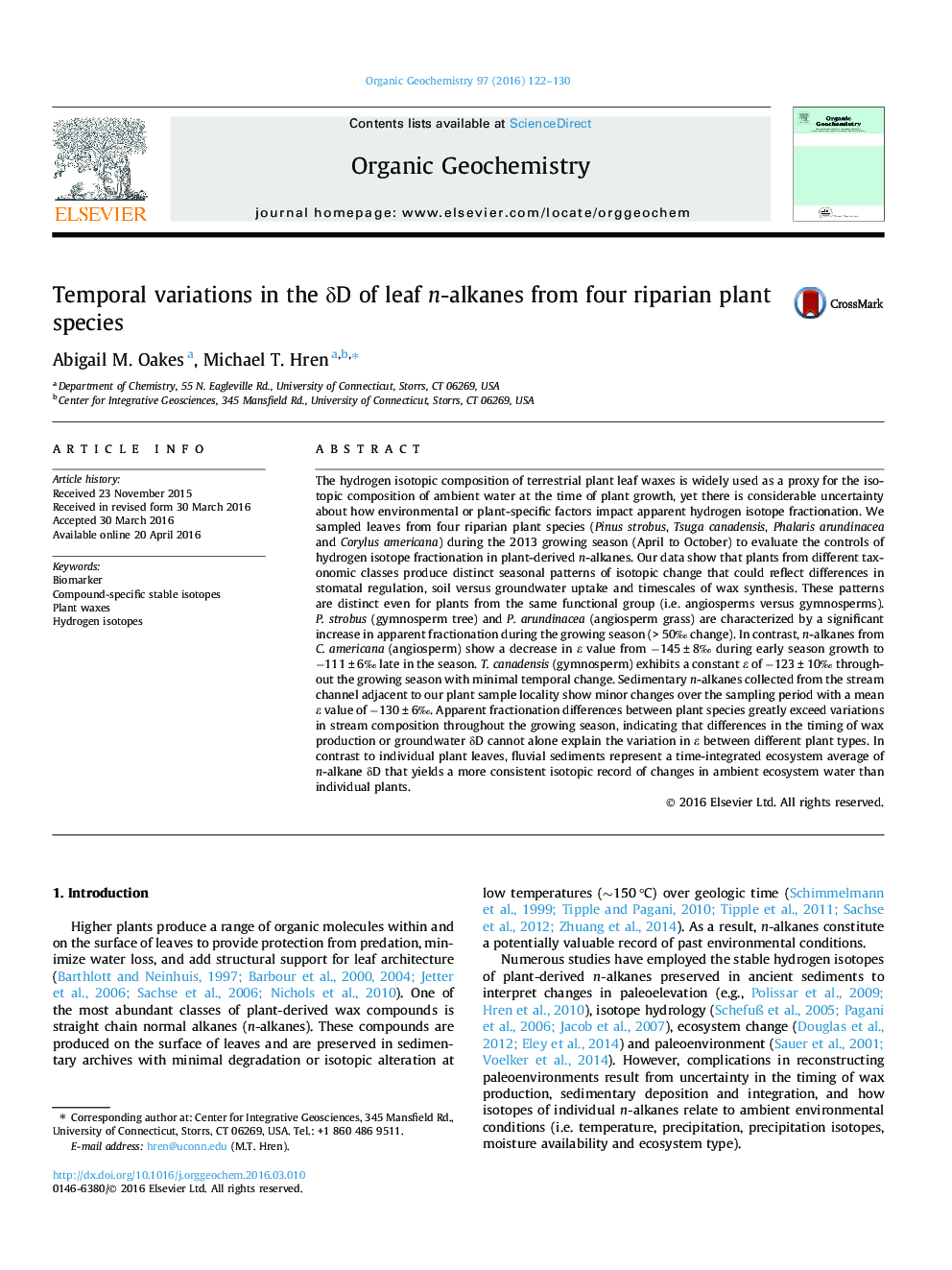| Article ID | Journal | Published Year | Pages | File Type |
|---|---|---|---|---|
| 5161677 | Organic Geochemistry | 2016 | 9 Pages |
Abstract
The hydrogen isotopic composition of terrestrial plant leaf waxes is widely used as a proxy for the isotopic composition of ambient water at the time of plant growth, yet there is considerable uncertainty about how environmental or plant-specific factors impact apparent hydrogen isotope fractionation. We sampled leaves from four riparian plant species (Pinus strobus, Tsuga canadensis, Phalaris arundinacea and Corylus americana) during the 2013 growing season (April to October) to evaluate the controls of hydrogen isotope fractionation in plant-derived n-alkanes. Our data show that plants from different taxonomic classes produce distinct seasonal patterns of isotopic change that could reflect differences in stomatal regulation, soil versus groundwater uptake and timescales of wax synthesis. These patterns are distinct even for plants from the same functional group (i.e. angiosperms versus gymnosperms). P. strobus (gymnosperm tree) and P. arundinacea (angiosperm grass) are characterized by a significant increase in apparent fractionation during the growing season (> 50â° change). In contrast, n-alkanes from C. americana (angiosperm) show a decrease in ε value from â145 ± 8â° during early season growth to â111 ± 6â° late in the season. T. canadensis (gymnosperm) exhibits a constant ε of â123 ± 10â° throughout the growing season with minimal temporal change. Sedimentary n-alkanes collected from the stream channel adjacent to our plant sample locality show minor changes over the sampling period with a mean ε value of â130 ± 6â°. Apparent fractionation differences between plant species greatly exceed variations in stream composition throughout the growing season, indicating that differences in the timing of wax production or groundwater δD cannot alone explain the variation in ε between different plant types. In contrast to individual plant leaves, fluvial sediments represent a time-integrated ecosystem average of n-alkane δD that yields a more consistent isotopic record of changes in ambient ecosystem water than individual plants.
Related Topics
Physical Sciences and Engineering
Chemistry
Organic Chemistry
Authors
Abigail M. Oakes, Michael T. Hren,
